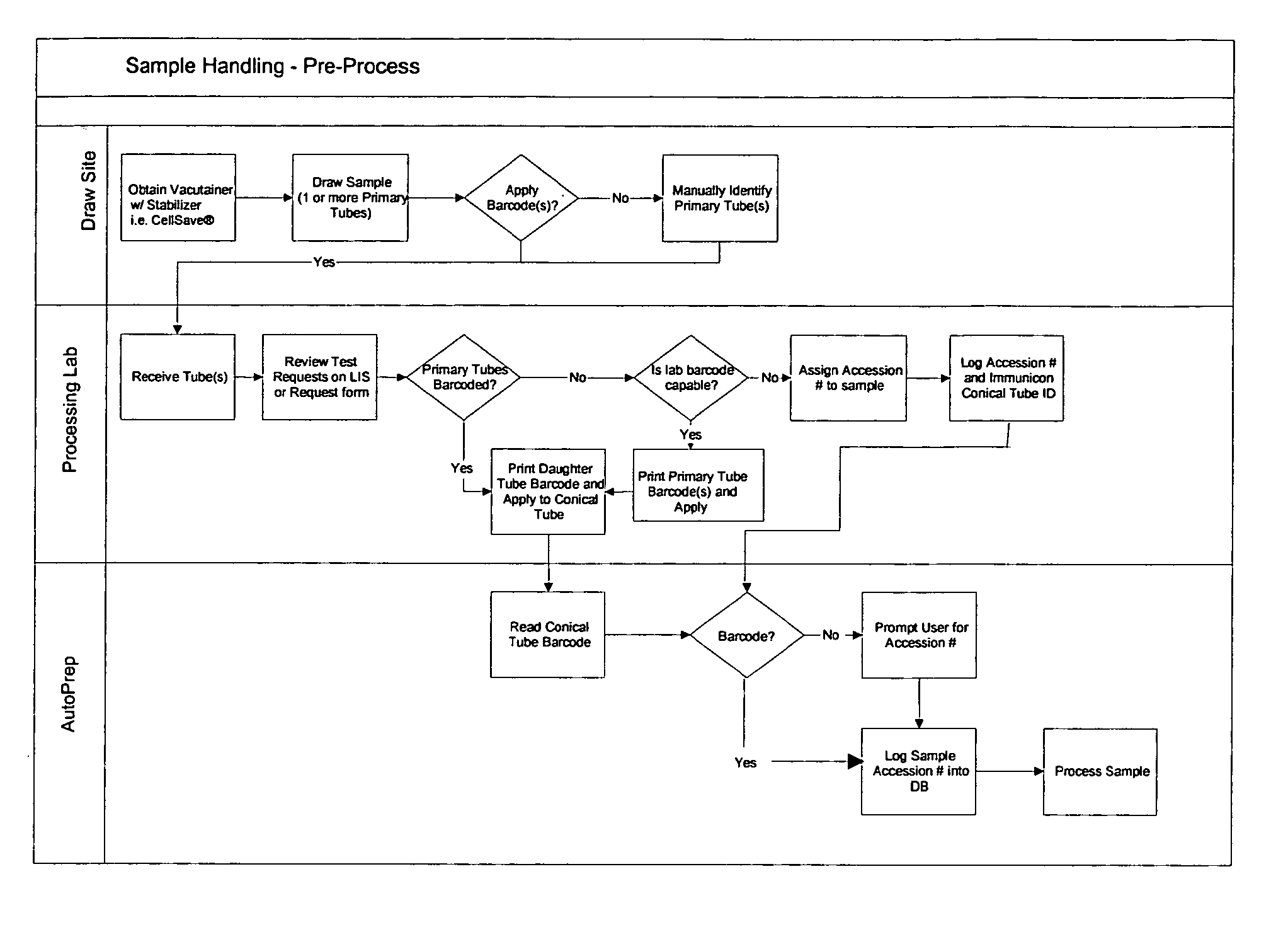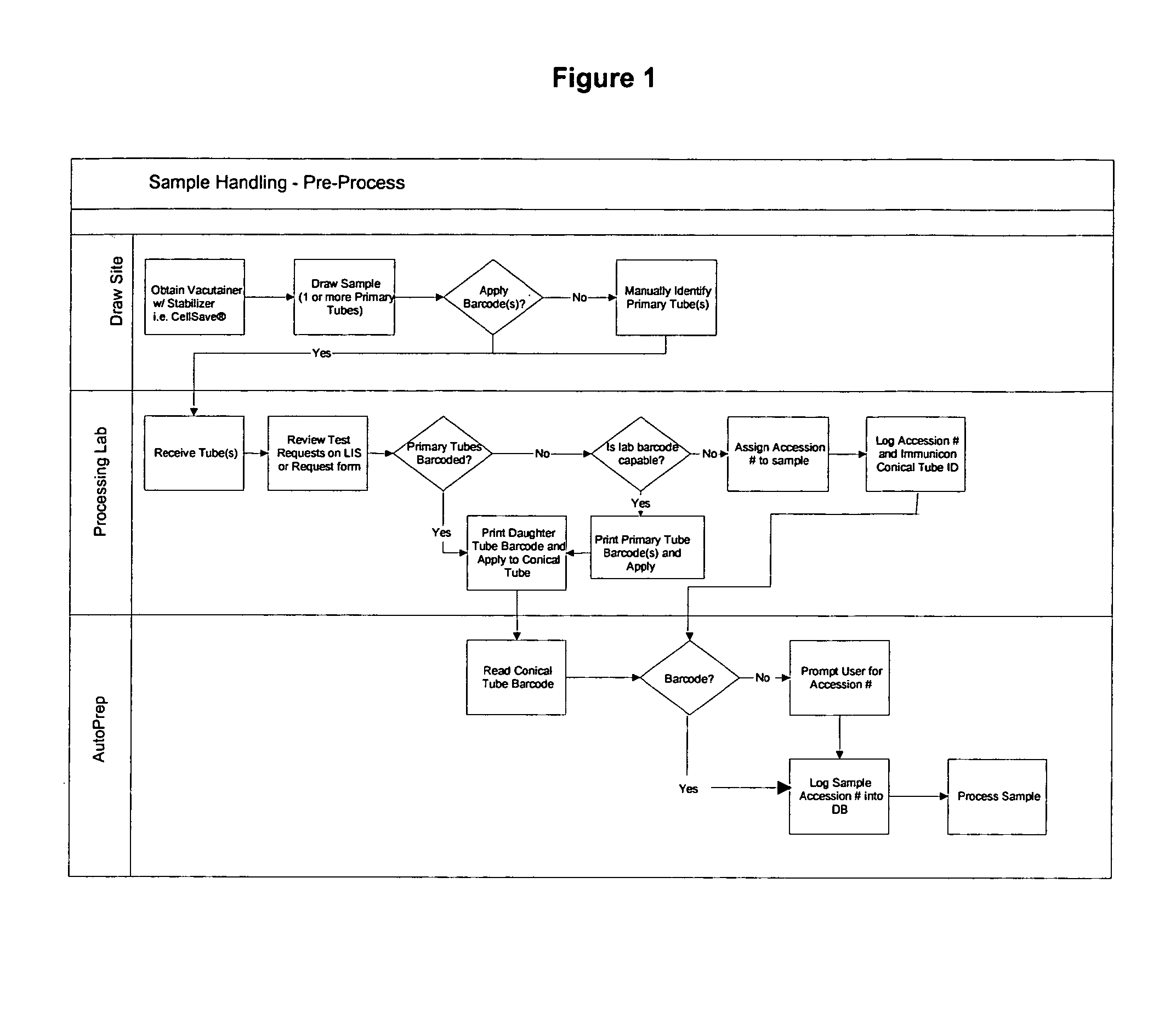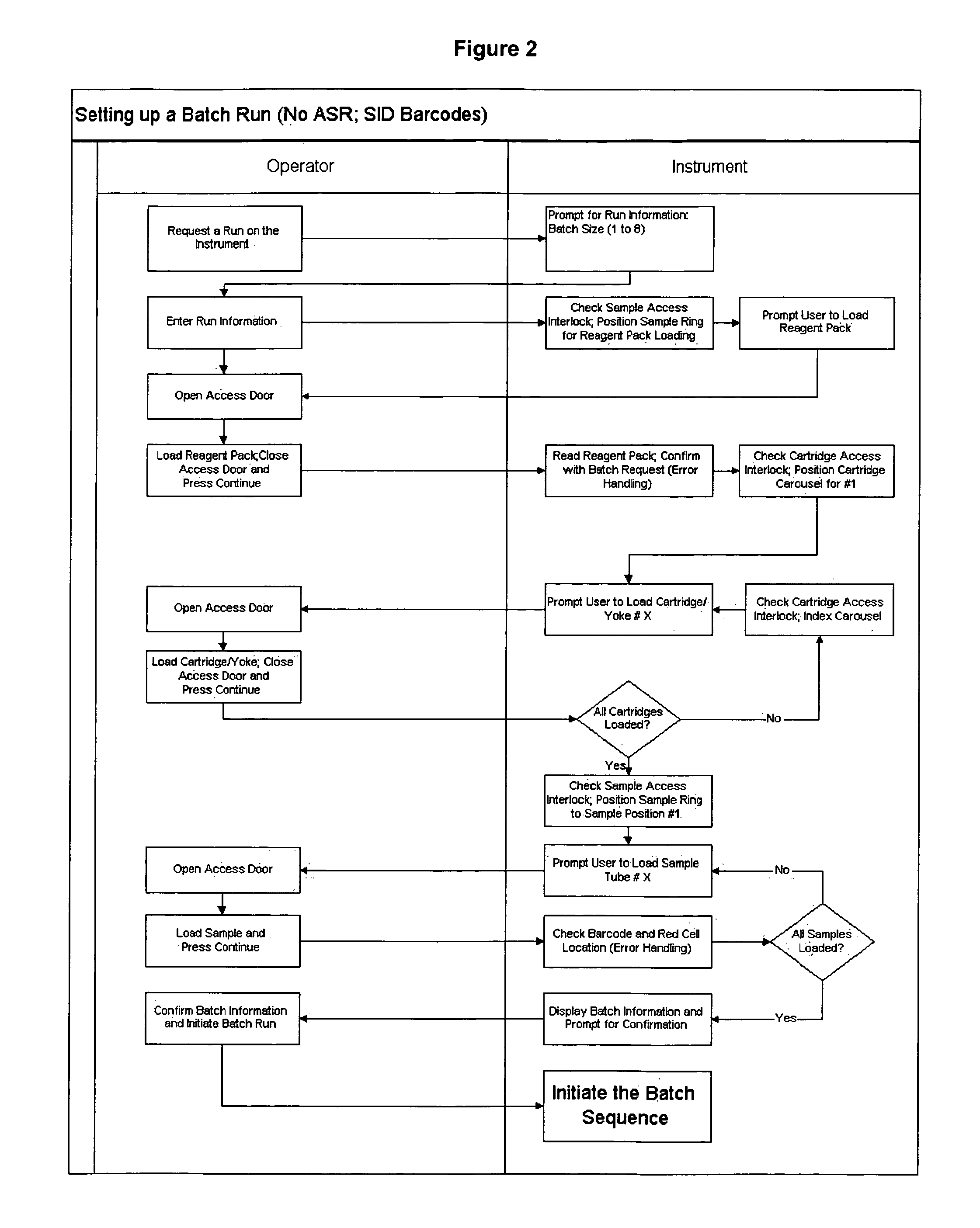Operator independent programmable sample preparation and analysis system
a programmable sample and operator technology, applied in the field of automatic sample processing, can solve the problems of inability to easily adapt to automation, frequent error in analysis results, and inability to detect pre-analysis errors, so as to improve the overall precision, reduce operator errors, and improve process efficiency
- Summary
- Abstract
- Description
- Claims
- Application Information
AI Technical Summary
Benefits of technology
Problems solved by technology
Method used
Image
Examples
Embodiment Construction
[0027]Tumor cells are often present in blood of carcinoma patients at very low frequency (<10 cells per ml) and may provide clinically useful information. However, the laborious procedures required to detect and quantify the presence of circulating tumor cells introduce a high level of variability in the results. The system of this invention aids in processing and analysis of 4 to 30 ml blood samples for tumor cells of epithelial origin and other rare cell fractions.
[0028]Target cells are labeled and separated from blood by magnetic means and the captured cells are fluorescently labeled to permit detection and differentiation from non-target cells.
[0029]The apparatus of this invention eliminates a substantial number of user required steps, and produces a 320 ul liquid sample that is placed in a suitable analysis chamber (for example, but not limited to, the chamber described in U.S. Ser. No. 10 / 074,900) for use in the image analysis systems. For example in the CellSpotter®, the cham...
PUM
| Property | Measurement | Unit |
|---|---|---|
| volume | aaaaa | aaaaa |
| volume | aaaaa | aaaaa |
| volume | aaaaa | aaaaa |
Abstract
Description
Claims
Application Information
 Login to View More
Login to View More - R&D
- Intellectual Property
- Life Sciences
- Materials
- Tech Scout
- Unparalleled Data Quality
- Higher Quality Content
- 60% Fewer Hallucinations
Browse by: Latest US Patents, China's latest patents, Technical Efficacy Thesaurus, Application Domain, Technology Topic, Popular Technical Reports.
© 2025 PatSnap. All rights reserved.Legal|Privacy policy|Modern Slavery Act Transparency Statement|Sitemap|About US| Contact US: help@patsnap.com



